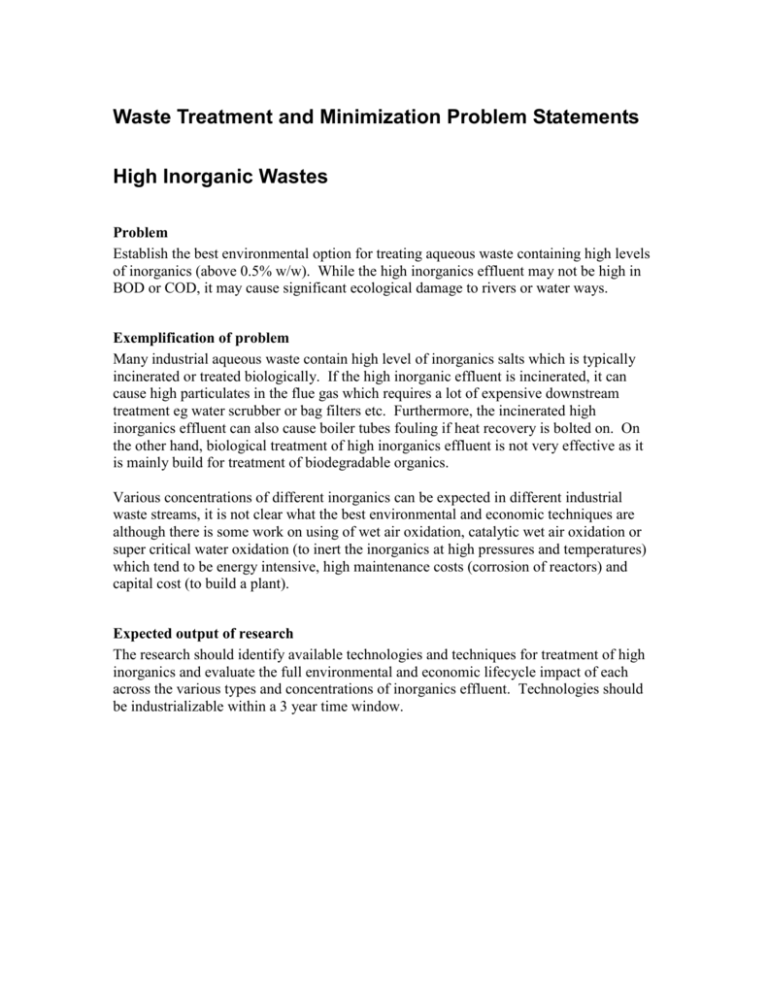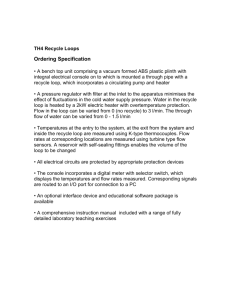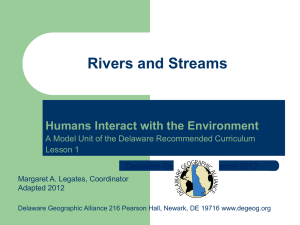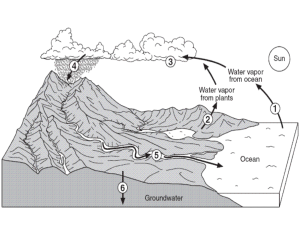Waste Treatment and Minimization Problem Statement
advertisement

Waste Treatment and Minimization Problem Statements High Inorganic Wastes Problem Establish the best environmental option for treating aqueous waste containing high levels of inorganics (above 0.5% w/w). While the high inorganics effluent may not be high in BOD or COD, it may cause significant ecological damage to rivers or water ways. Exemplification of problem Many industrial aqueous waste contain high level of inorganics salts which is typically incinerated or treated biologically. If the high inorganic effluent is incinerated, it can cause high particulates in the flue gas which requires a lot of expensive downstream treatment eg water scrubber or bag filters etc. Furthermore, the incinerated high inorganics effluent can also cause boiler tubes fouling if heat recovery is bolted on. On the other hand, biological treatment of high inorganics effluent is not very effective as it is mainly build for treatment of biodegradable organics. Various concentrations of different inorganics can be expected in different industrial waste streams, it is not clear what the best environmental and economic techniques are although there is some work on using of wet air oxidation, catalytic wet air oxidation or super critical water oxidation (to inert the inorganics at high pressures and temperatures) which tend to be energy intensive, high maintenance costs (corrosion of reactors) and capital cost (to build a plant). Expected output of research The research should identify available technologies and techniques for treatment of high inorganics and evaluate the full environmental and economic lifecycle impact of each across the various types and concentrations of inorganics effluent. Technologies should be industrializable within a 3 year time window. Aqueous Alcoholic Waste Problem Establish the best environmental option for treating low level aqueous waste containing alcohols. This waste is often too dilute to incinerate and requires pre-treatment to allow biotreatment. Exemplification of Problem Many industrial processes use simple polar solvents (e.g. methanol, ethanol). These solvents are obtainable from sustainable sources and their use is anticipated to increase. Aqueous process streams coming in contact with alcohols readily form a single phase. Removal of alcohols from waste water streams can be achieved by distillation or membrane evaporation and the alcohols recycled. Alternatively, the alcohols can be destroyed either prospectively in effluent treatment plants or via environmental release. Various concentrations of alcohol can be anticipated and it is not clear what the best environmental and economic techniques are across the range of alcohol concentrations. Expected Output of Research The research should identify available technologies and techniques for the treatment of alcoholic aqueous waste and evaluate the full environmental and economic lifecycle impact of each across a range of concentrations. The output should indicate at what concentrations the technologies are best employed. Technologies should be industrializable within a 3 year time window. Waste Treatment and Minimization Problem Statement High Boiling Organics Recovery Problem High boiling organic waste streams from Amoxicillin manufacture can be recycled or burned as a fuel for energy recovery. Exemplification of Problem Many industrial processes use organic reagents with boiling points greater than water. In order to recover these organic compounds purification and high vacuum fractional distillation is required. An alternative approach is to simply use the waste as fuel to generate reusable energy (steam / electricity) Example process: Waste from the steam distillation of Amoxicillin solvents contains ethyl hexanoic acid, pivalic acid, dimethyl acetamide, water and penicillin process residues. Expected Output of Research The research should identify all available technologies for treatment of the example process waste and evaluate the full lifecycle impact of recycle for manufacture versus use as fuel, identifying the best environmental and economic option. Technologies should be industrializable within a 5 year time window. Waste Treatment and Minimization Problem Statement Reverse Osmosis of Ketones Problem There are no reverse osmosis membranes suitable for concentration of ketone laden waste streams. Exemplification of Problem Concentration utilizing reverse osmosis is widely used to concentrate waste water streams. This technique is not currently used for waste streams containing ketones, though it would be a beneficial process to either: • Concentrate ketone solvent from waste water or • Concentrate high molecular weight compounds in ketone solvent streams. This is due to the disintegration of the membrane structures caused by the ketones themselves. Ketones are a widely used solvent in pharmaceutical manufacture, and this is likely to continue. Separation with membranes can be used to recover valuable materials from waste streams or to allow water to be recycled. Expected Output of Research The output should be the identification of membranes that can demonstrably concentrate 150 molecular weight organic compounds in streams containing ketone in the range 9020%. Waste Treatment and Minimization Problem Statement Water Treatment and Recycle Problem Waste water streams can be oxidized using biological treatment and the outflow effluent can be treated to make water suitable for recycle. This does not, however, recover any meaningful energy and is a net energy consumer. An alternative approach is to concentrate the waste water to a high COD and then burn the concentrated waste recovering useful energy and recycle the water. Exemplification of Problem Waste of 60,000 ppm COD is treated in a complex aerobic process that reduces COD to <3,000 ppm but generates a waste sludge for disposal and requires the addition of nutrients and energy to oxidize the waste. An alternative approach is to concentrate the waste (utilizing membrane, evaporative or absorption technology) and recycle the water for re-use. The concentrated waste can be oxidized via a number of technology options and the energy generated from the oxidation process can be recovered (as plant steam for example). It is not clear which approach best suits which waste concentration / volume combinations to offer the best environmental option. This could be for a new build or for the retrofit of an existing treatment facility. Expected Output of Research Identification of waste treatment techniques for waste water streams with COD from 5,000 ppm to 200,000 ppm and volumes from 0.5 m3/hr to 50 m3/hr. Provide an environmental and economic life cycle assessment across a range of COD/Volumetric flows to support selection of the best solution for a particular case. Waste Treatment and Minimization Problem Statement Packaging and Device Recycling Problem Pharmacuetical medicines and consumer healthcare products are packaged in blisterpacks manufactured from PVC with aluminium foil lining. Inhaled devices (MDI & DPI) are manufactured from plastics and aluminium. These materials are difficult to dispose effectively or recycle at end of life. Exemplification of Problem The recycle and recovery rate for spent blisterpacks and inhaler devices is very poor. It has been measured that for products with a low active pharmaceutical ingredient dose the largest contributor to the product carbon footprint is likely to be the device and packaging. Expected Output of Research Review the existing presentations of medicines and recommend a more sustainable packaging to improve the re-use or recycle capability of the presentation. Explore green technologies and business concepts that could facilitate a world class capability for re-use and re-cycle of spent pharmaceutical packaging and devices in Singapore.







